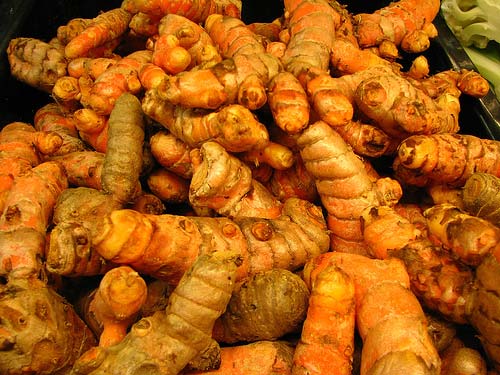Don’t Go Easy on the Turmeric
By Viji Sundaram | Nov 26, 2007

Researchers at the University of Texas have concluded that curcumin, the dye that lends turmeric its yellow color, can block the biological pathway to melanoma and other cancers.
Dr. Bharat Aggarwal, who headed the 12-member team of researchers at UT’s M.D. Anderson Cancer Center, told India-West in a telephone interview earlier this week that his clinical research has made available not only “the master switch to turn off cancer, but also a cure for it.” “It was already known that curcumin can prevent cancer,” Aggarwal said. “Now it can also be used to cure cancer.” And, he added: “We are providing evidence that curcumin can work on at least one dozen cancers.”
In fact, “let’s put it this way: we have not found a single cancer on which curcumin doesn’t work,” Aggarwal asserted. Turmeric, whose vernacular name is haldi, is a rhizome of the plant Curcuma longa. The medicinal use of this plant has been documented in Ayurveda, a 5,000-year-old system of medicine that has its origins in India.
Turmeric has long been used as a food preservative, a coloring agent, a spice to flavor food and as a folk medicine to cleanse the body.
Two to five percent of turmeric contains curcumin.
Because of turmeric’s extensive use in foods in India and Pakistan, the incidence of cancer, especially breast, colon prostate and lung, is a lot less in those countries, Aggarwal said. And because south Indians use turmeric more widely than north Indians, “the prevalence of cancer is less among them than among north Indians,” he said.
The spice has been shown to relieve arthritis as well, he added. The UT team’s research focused on how curcumin stops laboratory strains of melanoma from proliferating, and pushes the cancer cells to commit suicide.
The team homed in on a molecule called NF-kappa B, a powerful protein known to promote an abnormal inflammatory response that leads to cancer in some people, arthritis in others, and a wide range of other diseases in other people.
“Nearly 98 percent of all diseases are controlled by this molecule,” Aggarwal told India-West, pointing out that the humble yellow dye can subdue this potent molecule.
Earlier this year, a UCLA study published in the online edition of the Journal of Biological Chemistry, indicated that curcumin inhibits the accumulation of destructive beta amyloids in the brains of Alzheimer’s patients.
The team determined that curcumin is more effective in inhibiting formation of the protein fragments than many other drugs being tested to treat Alzheimer’s. The prevalence of the disease among older adults in India is 4.4 times less than in the U.S., suggesting that many Indians might be benefiting from having turmeric as a dietary staple.
Researchers at Emory University have tweaked the curcumin structure and made analogues – synthetic versions — of it which are far more potent than the real thing, Aggarwal said. The analogues were tested by the National Cancer Institute and found very effective, he said. Combined with black pepper, curcumin becomes 2,000 times more potent, a fact that has resulted in the manufacture in the U.S. of a formulation called “Super Curcumin” and sold as a dietary supplement.
Note Tattvas Herbs Turmeric contains Bioperine (extract of Black Pepper)
Aggarwal said that Indians have known all along about the anti-inflammatory benefits of turmeric, but “there was no documented proof” up until now.














